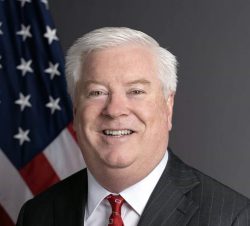10:53 JST, December 16, 2021
Around 10,000-12,000 years ago, Homo sapiens sapiens began to actively modify the natural environment to cultivate and grow their own food. This new way of life had many consequences, some welcome, others not. For one, it exposed humans to new pathogens, originating from domesticated animals, while denser and more sedentary populations created the conditions for the spread of these new pathogens. By the time of Hippocrates (460-370 B.C.), epidemics were already a major medical concern that merited an entire treatise. The COVID-19 pandemic is the latest stage in this ongoing evolution of human society and communicable diseases, in which increased global mobility pushed the reach and intensity of a pathogen’s spread to an unprecedented global scale.
It’s only been two years since the onset of COVID-19, and yet, with so many changes we experienced, it feels like decades ago. Until recently, our implicit assumption was always that the pandemic would end someday. Even as we adjusted to the changing reality under the pandemic, we were constantly thinking about the “post-pandemic” life. What would it be like to get our social life back? What would the post-pandemic job market look like and what could we do to be successful in it? What changes should we expect in schools and college campuses as students return to classrooms? Everyone imagined, vaguely, that things would be different than how they were, but we had little doubt that the “post” would arrive, soon or later, if we hunkered down, did all the right things, and stayed hopefully patient.
When vaccines finally became readily available, infection rates began to go down, schools began to open and more and more people went back to work. But this semblance of normalcy had its own difficulties. Once the initial excitement of freer movement and increased social interaction had passed, many found that it was overwhelming and exhausting to be around people all the time after a year in social isolation. Commuters realized how much more complicated their lives were when they had to spend hours on the road every day and that they no longer had enough time to spend with their families or get extra work done. Others found the expectation to return immediately to the pre-pandemic level of productivity was overwhelming, given all the adjustments they were still making.
At my university, we went through a similar mix of excitement and challenges when we reopened our campus in September and brought back students, faculty and staff. In the first week of classes, some students were sent away from classes because they failed to meet their vaccination requirements. I was a nervous wreck to speak in front of my classes and it seemed to take more effort to bring students out of their shells after they had become used to sitting passively in front of their laptops in the past year. Contact tracing put a bunch of students on quarantine until they obtained a negative test result, and meanwhile they needed to attend classes online. Teaching simultaneously in person and online, then, created a whole new set of technological and pedagogical challenges for the faculty, who were caught unprepared for such a situation.
As the semester progressed, quarantine cases seemed to die down, only to be replaced by an increasing number of students reporting flu-like symptoms. Their COVID tests invariably turned out negative; regardless, they were too sick to be in class for days. Students, especially those with weakened immune systems, seemed to catch one infection after another, limping along for the last two months of the semester. Everyone seemed exhausted by November, and the Thanksgiving break didn’t seem nearly enough to recover from two months of rapid adjustment to campus life.
Obscured by the preoccupation to keep up with the demands of daily life in these unfamiliar circumstances is the stress of living with uncertainty, of not knowing when our lives will be turned upside down again. Gone is the innocent trust in the stability and safety of life as we knew it. Our hope of early closure to the pandemic was betrayed time and time again; we had a glimpse of hope in late spring to early summer, when vaccination rates went up and COVID cases were reduced dramatically. Then, in July, the spread of the Delta variant seemed to set us back once again. Now, even as more people are getting booster shots, comes the latest news of the more transmittable omicron variant, whose effects on the course of the pandemic have yet to be determined.
After nearly two years, it is only human, perhaps, that we are finding it harder to maintain our vigilance. Despite the unpredictable rise of new variants, I see more and more people tossing caution to the wind and venturing out to crowded public places without masks. Social distancing is all but gone, too, making it seem like a dream when we religiously kept six feet of distance from one another. It is as though we are too tired to care any longer. As this pandemic turns into an endurance game, however, the pertinent question is less and less about when it will end, but instead, if we will ever see the day when COVID-19 is no longer a threat. The resilience and adaptability of our species are being tested severely as we continue on this roller-coaster ride.
"Editorial & Columns" POPULAR ARTICLE
-

Violations of Subcontract Law: Major Automakers Must Eliminate Old Practices
-

Local Governments’ Tax Revenues: Devise Ways to Correct Imbalances in Tax Sources
-

5 Japanese Business Dinner Mistakes to Avoid — and What They Taught Me About Business in Japan
-

Heavy Rains in Asia: Support for Victims, Flood-Control Measures Urgently Needed
-

Rice Coupons: A Misguided Approach to Countering Rising Prices
JN ACCESS RANKING
-

Keidanren Chairman Yoshinobu Tsutsui Visits Kashiwazaki-Kariwa Nuclear Power Plant; Inspects New Emergency Safety System
-

Imports of Rare Earths from China Facing Delays, May Be Caused by Deterioration of Japan-China Relations
-

University of Tokyo Professor Discusses Japanese Economic Security in Interview Ahead of Forum
-

Japan Pulls out of Vietnam Nuclear Project, Complicating Hanoi’s Power Plans
-

Govt Aims to Expand NISA Program Lineup, Abolish Age Restriction






















